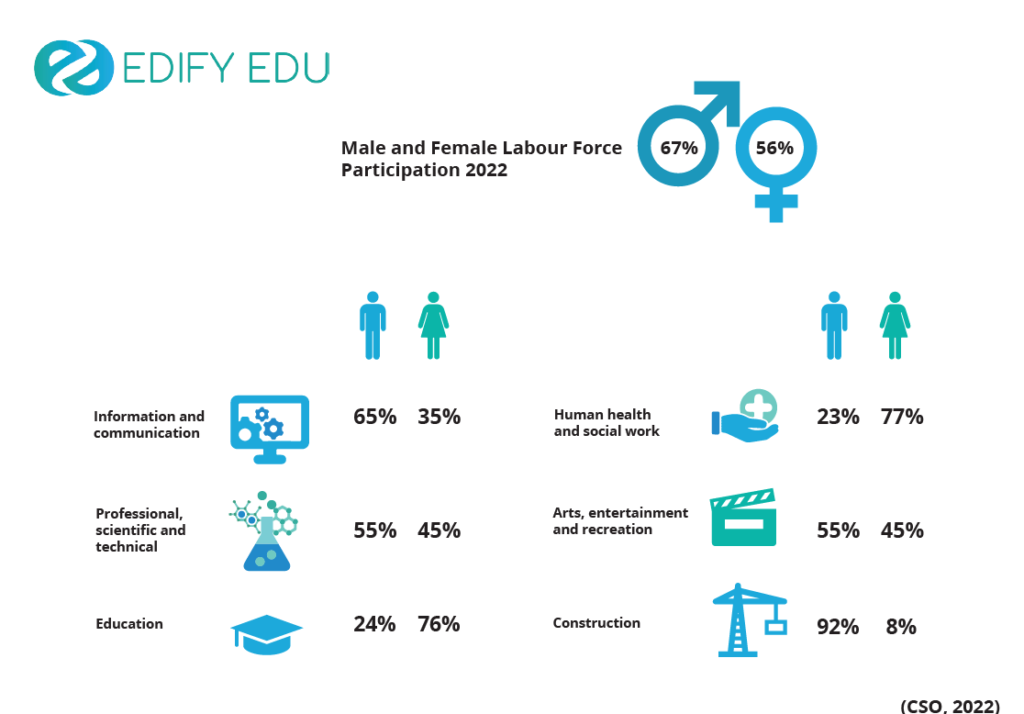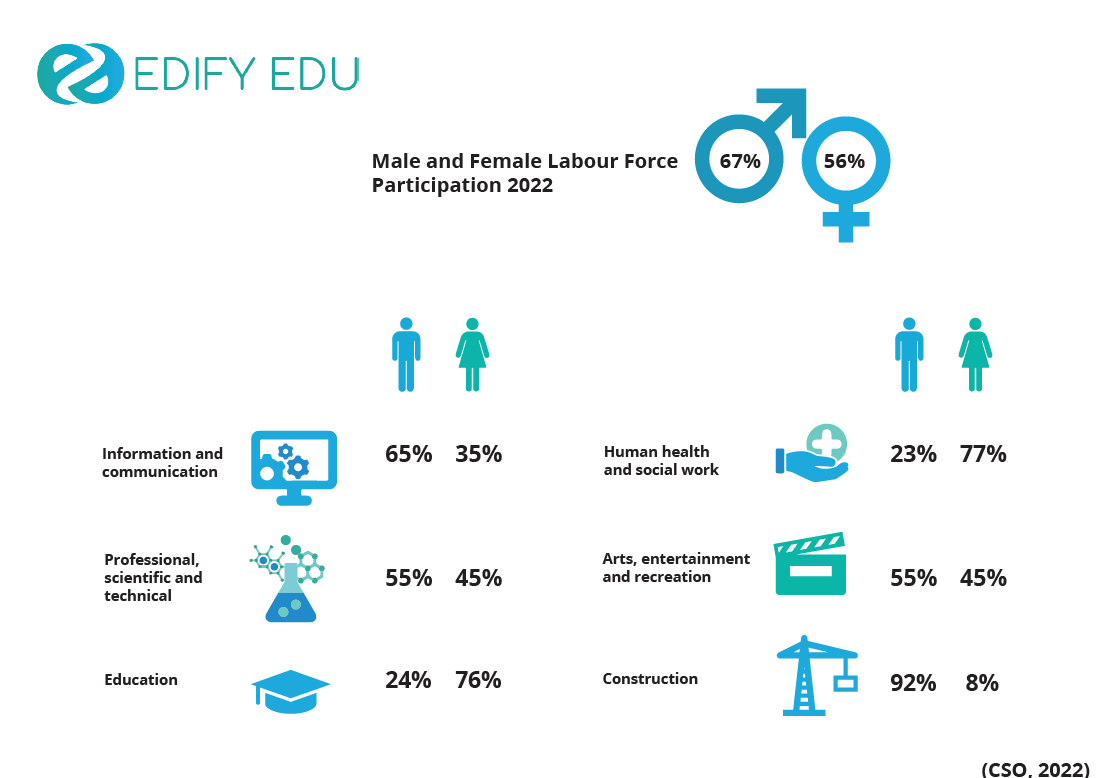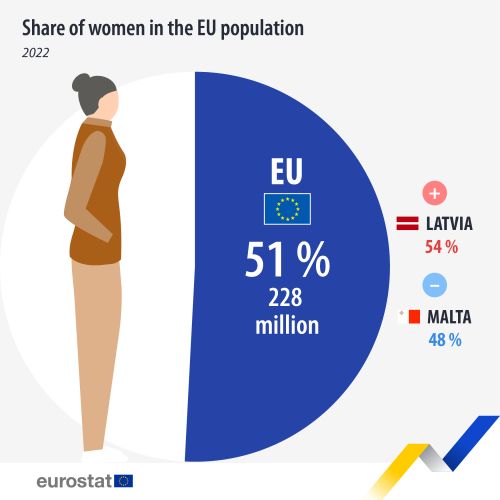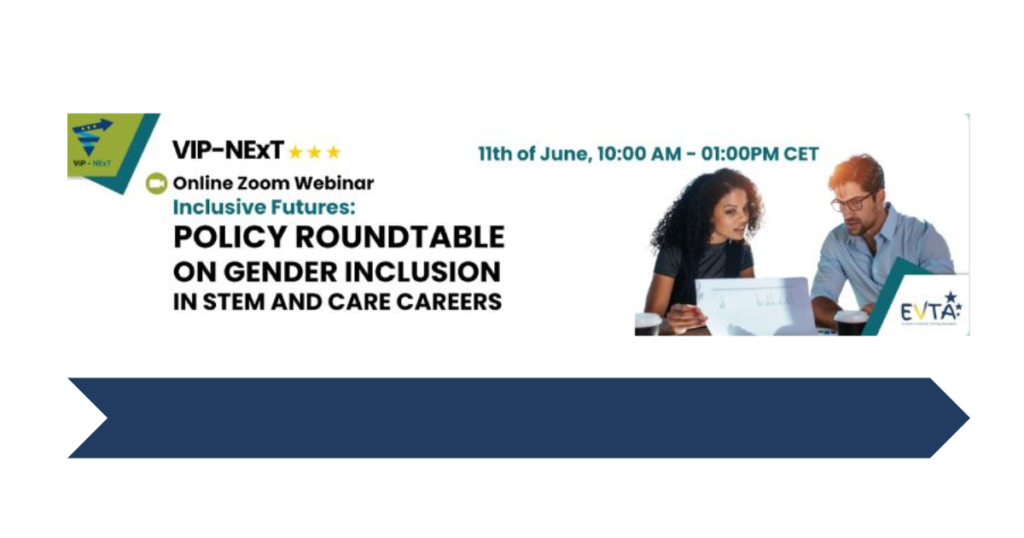
In six years, from April 2016 to April 2022, Ireland’s population has seen steady growth, surging by 8% to reach 5,149,139 people, with an average age of 38.8. Notably, there are 60,041 more females than males in the State. However, despite this population expansion and gender disparity, the progress in increasing female labour force participation has seen minimal growth with only a one percent increase since 2016.
The latest census revealed Ireland’s labour force participation stands at 61%. Between 2016 and 2022, the participation rate for males decreased slightly from 68% to 67%, while the rate for females showed a modest improvement, rising from 55% to 56%. Over the years, female participation in the labour force has increased significantly, starting from under 30% in 1981 and reaching 53% in 2006. However, since 2006, the growth in female labour force participation has slowed, with an increase of only 3 percent to reach 56% by 2022. The population has grown 8% since April 2016 to 5,149,139 with an average age of 38.8.
As of 2022, the wholesale and retail trade sector employed just under 277,000 workers, making it the largest employer. The second largest sector was human health and social work activities, with almost 270,000 people employed. Notably, this sector experienced the most significant increase, with nearly 46,000 more workers employed since 2016. The information and communications activities sector also saw substantial growth, with a 39% increase, resulting in over 125,000 individuals employed. Similarly, the professional, scientific, and technical activities sector employed over 158,000 people, reflecting a 39% increase.
In terms of gender distribution, approximately 47% of people in employment were female. However, this percentage varied across different sectors. Industries such as “construction,” “agriculture, forestry and fishing,” along with “transportation and storage,” were predominantly male-dominated, with rates of 92%, 87%, and 78%, respectively. On the other hand, the industries with a higher representation of women included “other service activities,” “education,” and “human health and social work activities,” where the female workforce comprised 71%, 76%, and 77%, respectively.
It is interesting to note that although the education industry is predominantly represented by women, there are still significant disparities in higher positions within higher education institutes in Ireland. In 2017, only 24% of professors were women, and the university sector had never had a female president. Similarly, in the Institutes of Technology, out of 14 Presidents, only 2 were women (Higher Education Authority, 2017).
While there has been some progress in female representation in higher positions since then, the latest HEA Gender Equality Report (2022) emphasises the crucial role of male leaders in driving further advancements in gender equality. This includes their active involvement in awareness training, advocating for meaningful change, and acting as allies for women. Moreover, male leaders are urged to actively shape a more inclusive and supportive culture supporting EDI implementation.
In the medical industry, there has been a relatively more balanced gender representation in consultancy level roles; however, surgery remains the least popular speciality choice among female medical practitioners. A study on the role of gender in Irish medicine revealed that respondents perceived surgery as a speciality that is “male-oriented and dominated,” and they expressed concerns that being female might be detrimental to career progression in this field. (Irish Medical Organisation, 2017). Although there appears to be a more level playing field in career progression within this industry, it is evident that gender biases still exist, negatively impacting women’s advancement.
Census of Population 2022. (2023). Central Statistic’s Office. Employment, Occupation, Industry and Commuting. Available at: https://www.cso.ie/en/releasesandpublications/ep/p-cpsr/censusofpopulation2022-summaryresults/employmentoccupationindustryandcommuting/
Higher Education Authority. (2017). Accelerating Gender Equality in Irish Higher Education Institutions. Gender Action Plan 2018-2020. Available at: https://hea.ie/assets/uploads/2018/11/Gender-Equality-Taskforce-Action-Plan-2018-2020.pdf
Higher Education Authority. (2022). Gender Equality. Report of the Expert Group: 2nd HEA National Review of Gender Equality in Irish Higher Education Institutions. Available at: https://hea.ie/assets/uploads/2022/03/Report-of-the-Expert-Group-2nd-HEA-National-Review-of-Gender-Equality-in-Irish-Higher-Education-Institutions.pdf
Irish Medical Organisation. (2017). IMO Position Paper on Women in Medicine. Available at: https://www.imo.ie/policy-international-affair/documents/IMO-Position-Paper-on-Women-in-Medicine-Final.pdf






